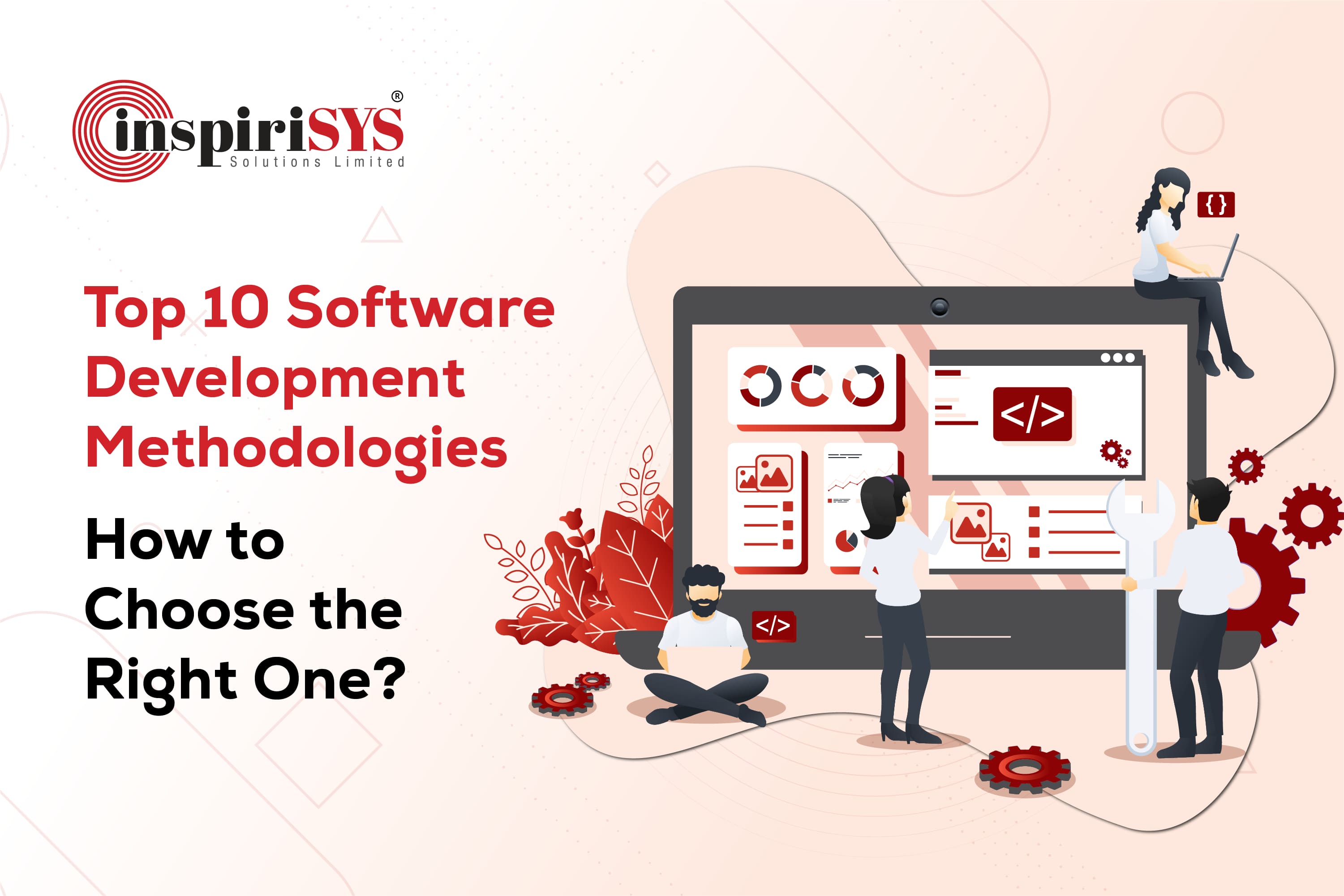Almost every software development company faces the challenge of picking the right development methodology. A structured software development workflow always requires a suitable methodology for a smooth development process. Several factors including project goals, team size, and budget play important roles in adopting the perfect software development methodology for the success of any project.
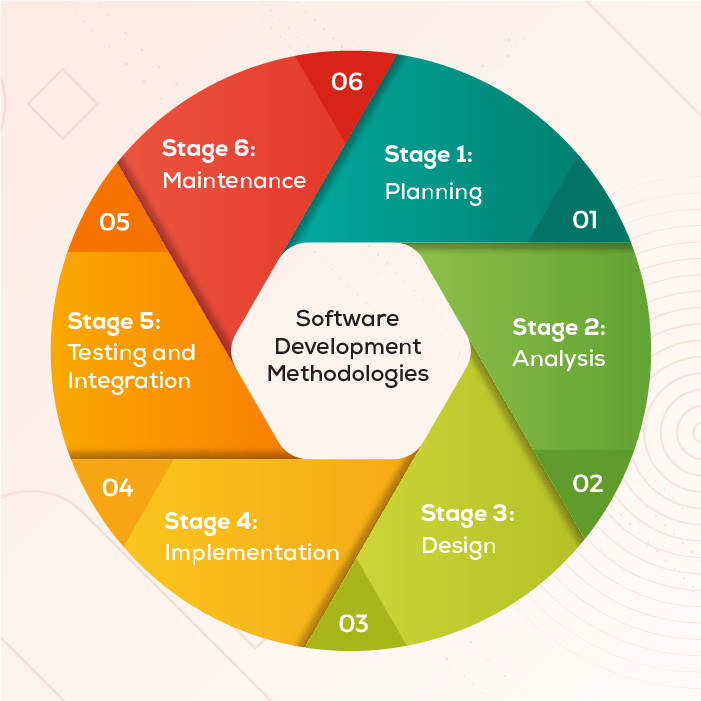
As you might have sensed, the dependency on choosing the best software development methodology has become significant, as it affects both the process and end product (software solutions). Hence, we have listed down the top 10 methodologies that can help you develop software with minimal difficulties. Also, stick to the end for a simple guide on how to choose a methodology that best suits your requirements.
Top 10 Software Development Methodologies
1. Agile
Agile software development methodology is an iterative approach to software development that emphasizes flexibility and collaboration between cross-functional teams. The Agile methodology is designed to respond quickly to changes in the requirements or needs of the project and to deliver working software in short increments or iterations, usually ranging from one to four weeks.
Phases Involved in Agile Methodology:

Benefits of using Agile Software Development Methodology
-
Increased flexibility and responsiveness to changing requirements
-
Improved collaboration and communication among team members
-
Faster time-to-market and delivery of working software
-
Increased customer satisfaction through continuous feedback and involvement
-
Reduced risk and increased transparency through iterative development and testing
Use Agile methodology if you have a dynamic team that upgrades products regularly.
Don’t use Agile methodology if your team has tight budgets and timelines.
2. Waterfall
Our second pick is the most famous methodology, the Waterfall development process, used by several high-performing teams. This methodology is a sequential approach to software development that follows a linear and sequential flow. The waterfall model is characterized by a series of distinct phases, each of which must be completed before the next phase begins.
Phases Involved in Waterfall Methodology:

Benefits of using Waterfall Methodology
-
Clear project requirements and well-defined scope
-
A structured and organized approach to software development
-
Easy to understand and manage
-
Rigorous testing and quality control
Use Waterfall methodology if your team defined structures and needs documentation of the whole project.
Don’t use the Waterfall methodology if you want to take a dynamic approach while developing a software
3. Kanban
Kanban is a software development methodology that focuses on visualizing and optimizing the flow of work. The approach was initially developed in the manufacturing industry and later adapted to software development. Kanban aims to minimize waste, reduce lead time, and increase efficiency.
Phases Involved in Kanban Methodology:
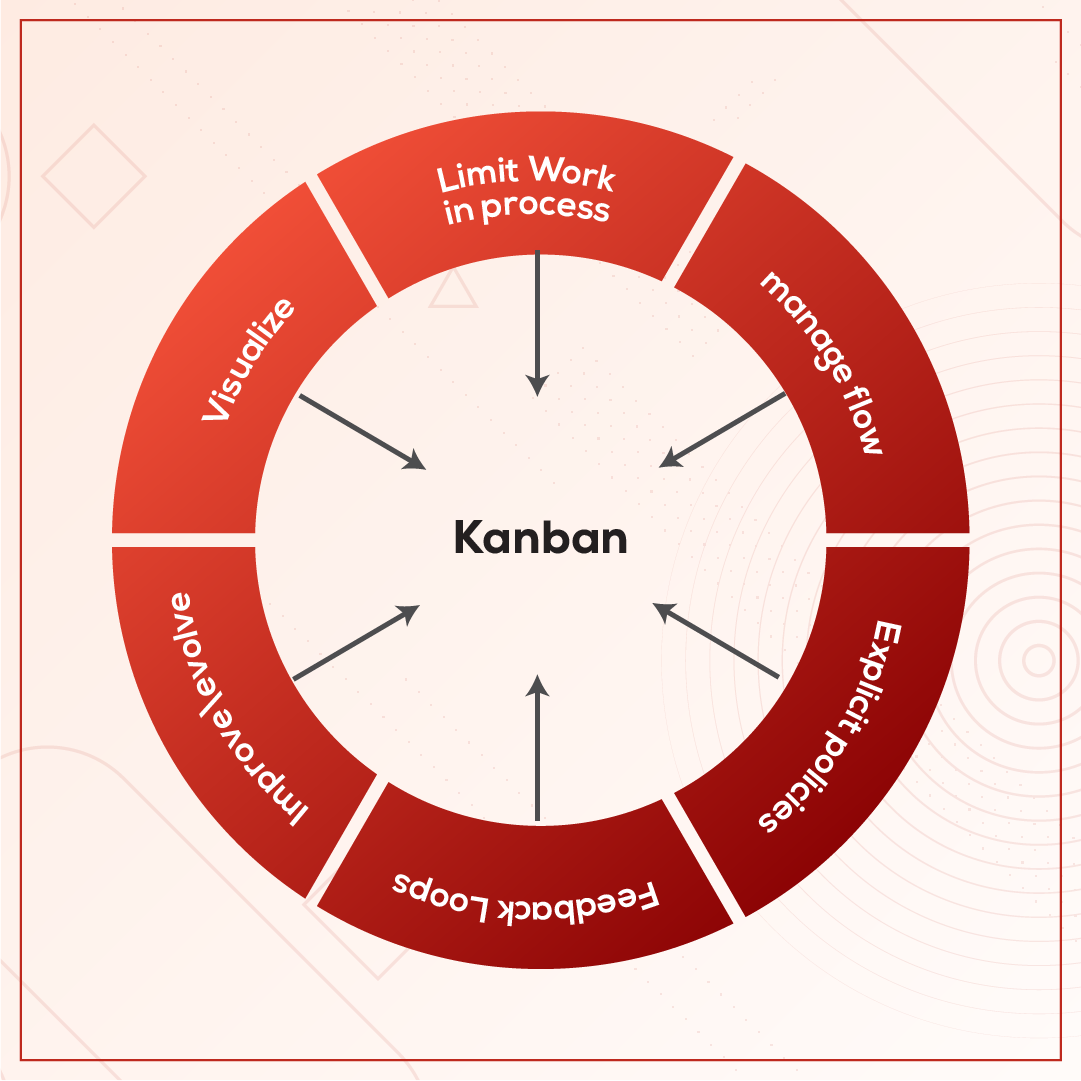
Benefits of using Kanban Software Development Methodology
-
Increased efficiency and productivity as Kanban reduces waste and eliminates bottlenecks, leading to faster delivery of software.
-
Kanban is flexible and can be adapted to different types of projects and teams.
-
Promotes transparency and communication, allowing team members to work together more effectively.
-
Kanban provides continuous feedback and allows for rapid response to quality issues.
Use Kanban methodology if your project has a large number of small tasks and a high degree of unpredictability.
Don’t use Kanban methodology if your team cannot update the Kanban board regularly.
4. DevOps
You must have come across DevOps methodology if you have landed on this page. This software development methodology aims to bridge the gap between software development and operations by emphasizing collaboration, automation, and continuous delivery.
Simply, the DevOps software development methodology makes teams work together to deliver high-quality software quickly and efficiently.
Phases Involved in DevOps Methodology:

Benefits of using DevOps Software Development Methodology
-
DevOps emphasizes continuous delivery and automation and this can lead to a faster time-to-market for new features and updates
-
Promotes collaboration between development and operations teams, which can help reduce the risk of miscommunication and errors
-
DevOps encourages continuous testing and monitoring, which helps to identify and fix issues early in the development process
-
By automating repetitive tasks and reducing manual intervention, DevOps can improve efficiency and reduce the risk of errors
-
Improved employee satisfaction can be attained with the DevOps methodology
Use DevOps methodology if you want to rapidly deliver software with continuous integration, continuous delivery, and deployment.
Don’t use DevOps methodology if you cannot afford collaborative teams and you are concerned about privacy threats.
5. Rapid Application Development (RAD)
Rapid Application Development (RAD) is a software development methodology that focuses on quickly building and prototyping applications with a high degree of user involvement. RAD aims to deliver software quickly using an iterative and collaborative approach.
Phases Involved in Rapid Application Development (RAD) Methodology:
.png)
Benefits of using RAD Methodology
-
RAD allows the software to be developed and delivered quickly, which can give companies a competitive advantage.
-
By involving users and stakeholders throughout the development process, RAD can lead to higher-quality software that meets their needs.
-
RAD promotes collaboration between developers, business analysts, and users, which can lead to better communication and understanding of requirements.
-
By reusing existing components and tools, RAD can reduce development costs.
Use RAD software development methodology if you have a smaller budget and want faster time-to-market.
Don’t use RAD methodology if you are working on projects with a high degree of complexity and uncertainty.
6. Lean Development
Lean development methodology mainly focuses on delivering value to customers while minimizing waste and maximizing efficiency. This methodology draws inspiration from the principles of the Toyota Production System, which aims to improve efficiency and quality by reducing waste and optimizing workflow.
The Key Principles of Lean Software Development Methodology include:
-
Waste elimination
-
Increased learning among team members
-
Flexibility to postpone decisions
-
Quick deliver
-
Build integrity
-
Consider the bigger picture
Phases Involved in Lean Development Methodology:
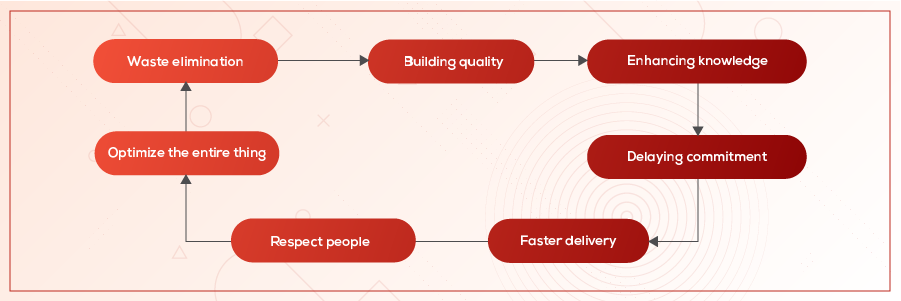
Benefits of using Lean Development Methodology
-
By focusing on delivering value to the customer and eliminating waste, Lean Development can lead to faster delivery of software
-
By continuously improving the process, Lean Development can lead to higher-quality software that meets the needs of the customer
-
Lean Development promotes better communication and understanding among team members
-
Elimination of waste and optimization of processes reduce the development costs
Use Lean development methodology if you are taking up a low-budget project with a rigid timeline.
Don’t use Lean development methodology if your team has inexperienced resources with less expertise.
7. Scrum
Scrum is a popular agile software development methodology that is used to manage and organize complex projects. It was initially developed for software development but can be applied to other fields as well. The primary reason why organizations pick the Scrum methodology is because of its ability to deliver valuable products with constant improvements in mind.
In Scrum, work is organized into short iterations, known as sprints, which typically last between one and four weeks. During each sprint, the team works on a set of tasks that they have committed to completing, and they hold regular meetings, known as ceremonies, to review progress and plan the next steps.
Phases Involved in Scrum Development Methodology:

Benefits of using Scrum Development Methodology
-
Scrum allows teams to be flexible and adaptable, enabling them to quickly respond to changing requirements and priorities.
-
Encourages regular communication and collaboration between team members.
-
Scrum's iterative approach allows teams to deliver working software in a shorter timeframe.
-
By continuously reviewing and testing the software, Scrum teams are able to identify and fix issues more quickly.
-
Scrum involves regular feedback from stakeholders, allowing them to see progress and make changes to the product as needed.
Use Scrum development methodology if you have highly skilled developers who are working on medium size projects that have uncertain requirements.
Don’t use Scrum development methodology if you cannot accurately estimate the time and cost required for the success of the project.
8. Spiral Model
The Spiral model combines the iterative nature of the Agile methodology with the structured and controlled approach of the Waterfall methodology. This model is based on a series of iterative cycles, each of which is called a spiral.
Each spiral represents a phase of the development process, and it is characterized by a set of activities that must be completed before the project can move on to the next phase.
Phases Involved in Spiral Model Development Methodology:
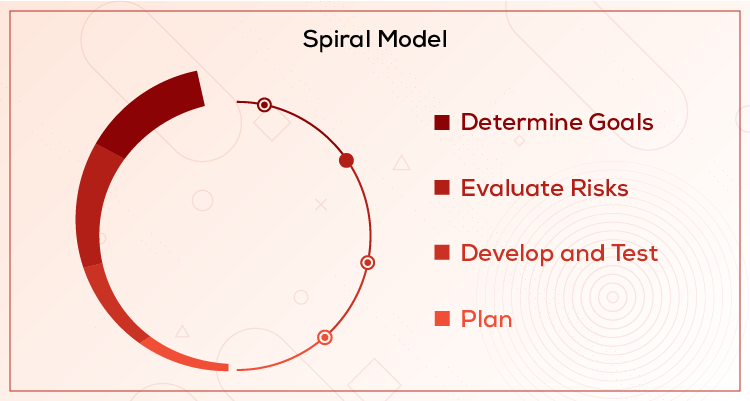
Benefits of using Spiral Development Methodology
-
This model includes a risk analysis phase that identifies potential risks and develops plans to cancel them out.
-
Encourages continuous improvement throughout the development process. This means continuous testing and evaluation are performed before releasing the product.
-
Encourages customer involvement (feedback) all over the development process.
-
Optimizes resource utilization by breaking the development process into smaller, more manageable tasks.
Use Spiral development methodology if you are exploring new projects and researching.
Don’t use Spiral development methodology if you are a small organization with a small project at hand.
9. V-shaped
The V-shaped software development model is a development process followed by a sequential path, similar to the Waterfall model. The V-shaped model emphasizes testing and verification activities throughout the software development lifecycle, with testing being performed at each stage of the development process.
In the V-shaped model, each stage of development is completed before the next stage begins, and the completion of each stage is marked by the successful completion of testing and verification activities.
Phases Involved in V-Shaped Development Methodology:
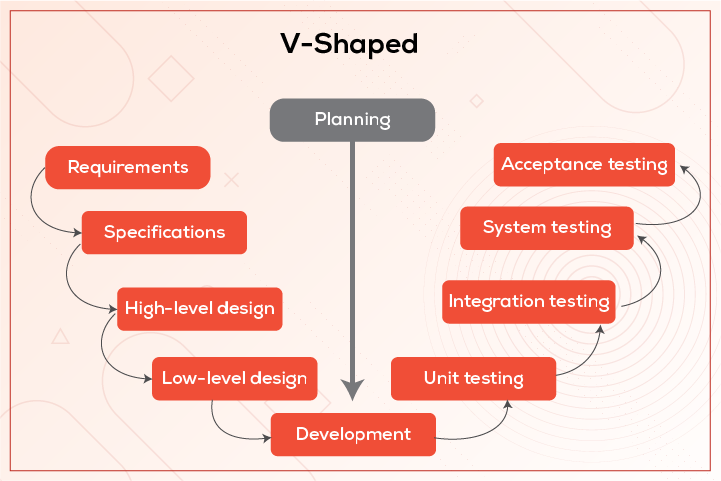
Benefits of using V-shaped Development Methodology
-
The V-shaped model is known for its focus on testing and validation. This significantly reduces errors and hence cuts expensive fixes.
-
This model emphasizes the importance of communication and collaboration between the development team and the testing team.
-
The clear and structured approach to software development makes it easier to estimate timelines and track progress.
-
Minimizes risks by identifying potential issues early in the development process.
Use V-shaped development methodology if your project has all requirements defined and there is only less need for iterative development.
Don’t use V-shaped development methodology if you are more inclined to use a flexible development model.
10. Adaptive Software Development (ASD)
Adaptive Software Development (ASD) focuses on delivering high-quality software in a highly collaborative and flexible environment. ASD places a strong emphasis on continuous communication and feedback between team members and stakeholders, allowing for adjustments to be made throughout the development process.
ASD is highly adaptive, allowing for changes to be made throughout the development process. This methodology is well-suited for projects that have evolving requirements or are subject to changing market conditions. ASD can also be beneficial for projects with a high degree of complexity or uncertainty, as it allows the project team to adjust their approach as necessary.
Phases Involved in Adaptive Software Development Methodology:
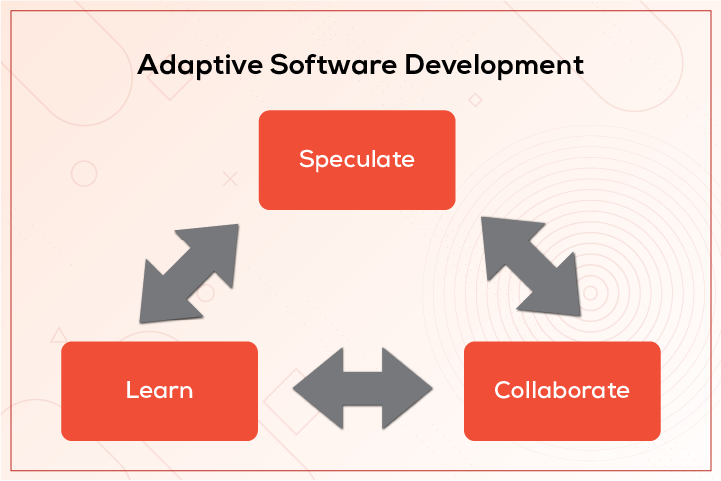
Benefits of using ASD Methodology
-
ASD's adaptive approach can help reduce risk and allows teams to quickly adjust their approach in response to changing circumstances.
-
The rapid feedback and iteration will enable teams to quickly identify and address issues as they arise.
-
ASD's focus on collaboration and rapid iteration can lead to increased customer satisfaction, as stakeholders are closely involved in the development process.
-
Teams constantly evaluate and refine their processes in response to feedback and data. This leads to continuous improvement in the product.
Use ASD methodology if you are into long-term projects which need risk analysis and strong control.
Don’t use ASD methodology if you cannot continuously collaborate with clients and users throughout development.
How to Choose the Best Software Development Methodology?
Now that you know what software development methodologies take place in our top 10 list, it’s time you get to know how to choose the best methodology for your project. The seven simple steps given below will give you clarity on which model to pick for a hassle-free workflow.
Step 1: Understand the project requirements and determine the project scope, goals, and objectives.
Step 2: Analyse the team's skill set. The methodology you choose should align with the team's expertise and skillset.
Step 3: The project timeline is the next crucial factor in selecting the methodology. For example, Agile methodology can be used for projects with tight deadlines.
Step 4: Assess the project complexity and choose the best methodology with well-defined requirements.
Step 5: Determine the level of client involvement.
Step 6: The budget is another factor that determines the choice of methodology. The methodology you choose must get the required funds for the smooth delivery of the project.
Step 7: Finally, review the past project performance of the methodology you are about to choose.
By considering all these simple steps you must be able to select the suitable software development methodology for the successful completion of any project.
Wrap up
Clearly, you are not restricted to only a few options when it comes to selecting a software development methodology. Sensible decisions before commencing a project are critical and the choice of development model is one among them. Project requirements, a company's development preferences, and other criteria play a vital role in determining a structured workflow. While methodologies like Agile and Scrum are the most popular in recent times, we would say, you always have other options which you must consider. On the whole, be smart and compare all the shortlisted methodologies to filter and choose the perfect model.


